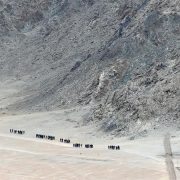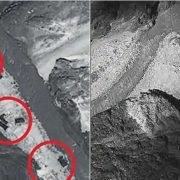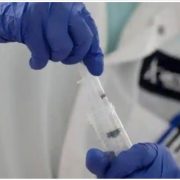
A ground-breaking detector that aims to use quartz to capture high frequency gravitational waves has been built by researchers at the ARC Centre of Excellence for substance particle physics (CDM) and therefore the University of Western Australia.
In its first 153 days of operation, two events were detected that would, in theory, be high frequency gravitational waves, which haven’t been recorded by scientists before.
Such high frequency gravitational waves may are created by a primordial region or a cloud of substance particles.
The results were published this month in Physical Review Letters in a piece of writing titled “Rare Events Detected with a Bulk sound wave High Frequency Gravitational Wave Antenna.”
Gravitational waves were originally predicted by Einstein , who theorized that the movement of astronomical objects could cause waves of spacetime curvature to be sent rippling through the universe, almost just like the waves caused by stones dropped into a flat pond. This prediction was proven in 2015 by the primary detection of a gravitational wave signal.
Scientists believe that low frequency gravitational waves are caused by two region s spinning and merging into one another or a star disappearing into a black hole.
Since then, a replacement era of gravitational wave research has begun but the present generation of active detectors feature strong sensitivity to only low frequency signals; the detection of high frequency gravitational waves has remained an unexplored and very challenging front in astronomy. Despite most attention dedicated to low frequency gravitational waves, there’s a big number of theoretical proposals for top frequency GW sources also , for instance , primordial blackholes.
The new detector designed by the research team at the CDM to select up high frequency gravitational waves is made around a quartz bulk sound wave resonator (BAW). At the guts of this device may be a quartz disk which will vibrate at high frequencies thanks to acoustic waves traveling through its thickness. These waves then induce charge across the device, which may be detected by placing conducting plates on the outer surfaces of the quartz disk.
The BAW detector device was connected to a superconducting quantum interference device, referred to as SQUID, which acts as a particularly sensitive amplifier for the low voltage signal from the quartz BAW. This assembly was placed in multiple radiation shields to guard it from stray electromagnetic fields and cooled to a coffee temperature to permit low energy acoustic vibrations of the quartz to be detected as large voltages with the assistance of the SQUID amplifier.
The team, including Dr. Maxim Goryachev, Professor Michael Tobar, William Campbell, Ik Siong Heng, Serge Galliou and Professor Eugene Ivanov will now work to work out the character of the signal, potentially confirming the detection of high frequency gravitational waves.








































